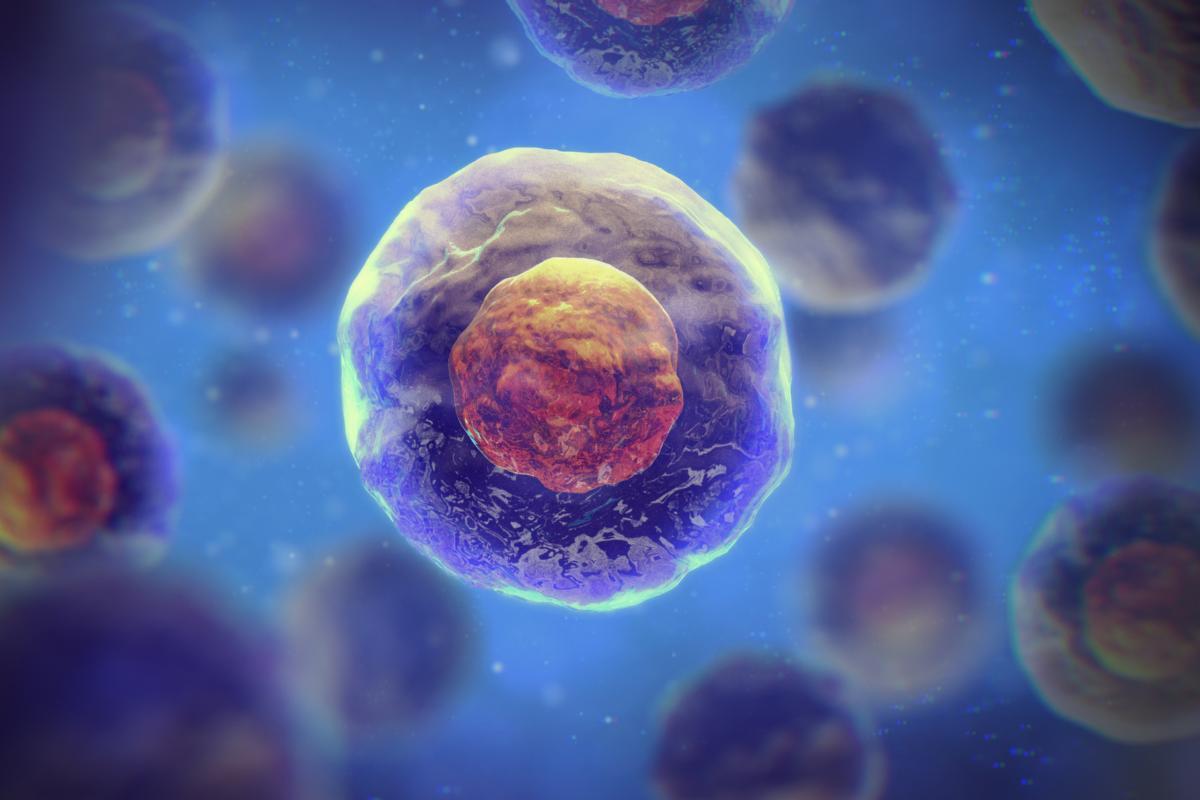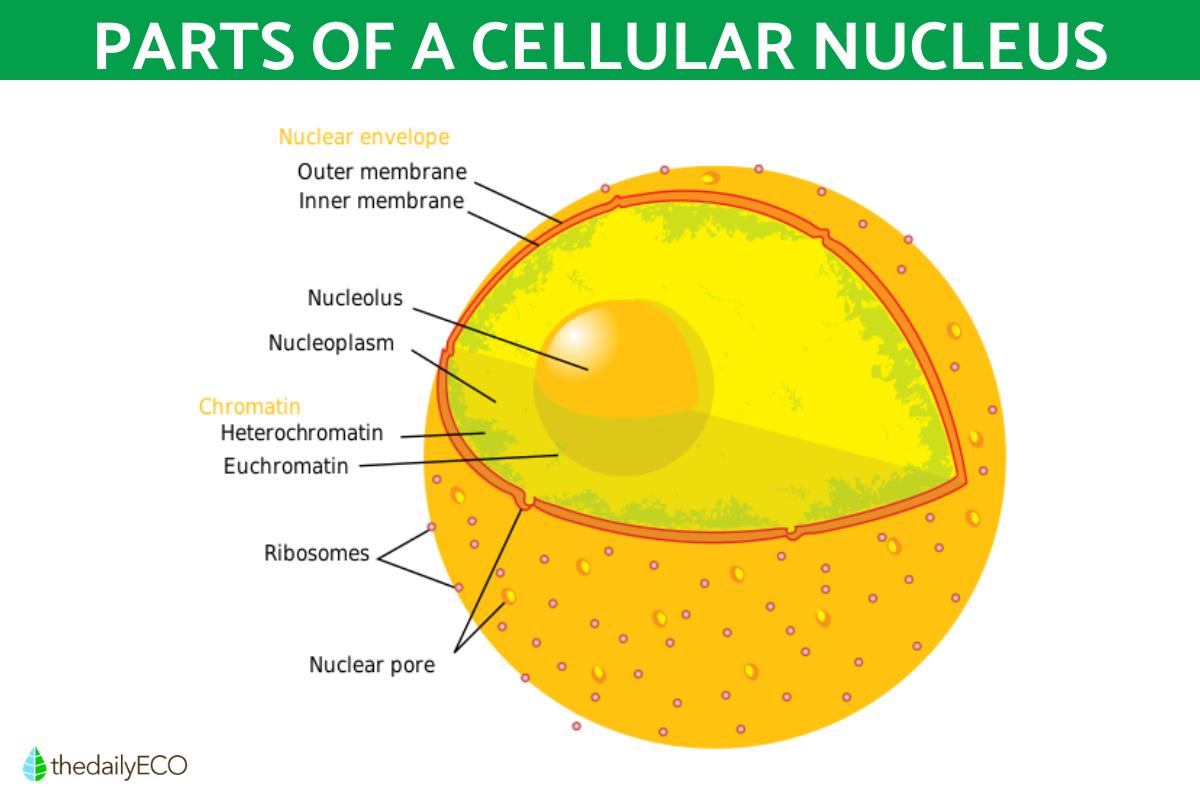What Is a Cell Nucleus and Its Function?


The cell nucleus is a cellular organelle of eukaryotes. These are the subcellular structures which allow the cell to carry out its functions. The nucleus is the largest organelle of eukaryotic cells, a type of cell found in all animals and plants. The parts of the cell nucleus include the nuclear envelope, nuclear pores, fibrous nuclear lamina, nucleolus, nucleoplasm and chromatin. The main function of the cell nucleus is the storage of genetic function, gene expression, replication and regulation of the cell cycle.
Cells are the basic unit of living beings. Each organelle structure is specialized to carry out the functions that keep organisms alive. Plants and animals are eukaryotic organisms because they have a nucleus. Those without a nucleus are known as prokaryotic cells. These prokaryotic organisms function differently. thedailyECO helps you to discover more by asking what is a cell nucleus and its function? We also provide diagrams to illustrate these functions.
What is the cell nucleus?
A very basic definition of a cell nucleus us that it is a cellular organelle typical of eukaryotic cells which contains the cell's genetic material. This genetic material is usually in the form of DNA molecules. Eukaryotic cells like the one pictured in the diagram above are defined by the fact they have a defined nucleus separated from the other organelles by a nuclear membrane.
Prokaryotic cells are different from eukaryotic cells because they lack a well-defined nucleus. This does not mean that prokaryotes do not have DNA or genetic information. This is information is carried in another part of the prokaryotic cell known as the nucleoid region.
Learn more about how genetic information is stored in cells with our article on the difference between DNA and RNA.

Characteristics of a cell nucleus
Now we know what a cell nucleus is, we can look at certain characteristics common to all cell nuclei. These characteristics include the following:
- The most important thing about the cell nucleus is that it contains almost all of the cell's DNA, i.e. the genetic material of an organism. This genetic information is packaged condensed into something called chromatin, along with proteins and histones. This passes into chromosomes only when the time comes for cell division.
- It is the largest organelle in the entire cell, so much so that it can be seen under an optical microscope. It measures 10 microns in diameter.
- We can differentiate between the animal cell nucleus and the plant cell nucleus. Both are eukaryotic cells, but there are certain elements that are not the same. The plant nucleus is usually larger than the animal nucleus and is located on one side close to the cell wall. The animal cell nucleus is smaller and is in the center of the cell.
Learn more about the differences between plant and animals cells with our related guide.
Parts of the cell nucleus
The structure of the cell nucleus varies depending on the phase of the cell cycle. If it is not in a form of cell division, it has the following parts (you can see a diagram of these parts below):
- Nuclear envelope: this is what delimits the nucleus. It consists of an external nuclear membrane that separates it from the cytoplasm. It also has an internal nuclear membrane. Between the two is a separation called the perinuclear cleft. The outer nuclear membrane is continuous with the rough endoplasmic reticulum, but the inner membrane is attached to the inner surface which is known as the fibrous nuclear lamina. This nuclear envelope serves as a barrier to the outside, but is also permeable and selective.
- Nuclear pores: these pores are located in the nuclear envelope, passing through it so that there is communication between the inside and outside, i.e. between the nucleus and the cytoplasm. They are selective. This means they can transport molecules such as RNA outwards or those such as lipids inwards. They achieve this through channels made by proteins. They are not simple pores, but when viewed under electron microscopy you can see that they are formed by 8 protein subunits, forming a cylinder also known as the nuclear pore complex.
- Fibrous nuclear lamina: serves as a support layer for the nucleus, especially for chromatin. It is shaped in a mesh-like network or lattice.
- Nucleolus: it is a large region within the nucleus, making up the largest part of the nucleus. Here ribosomes are made through the synthesis of rRNA, i.e. ribosomal RNA.
- Nucleoplasm: the liquid medium that contains the nucleus. It is located between the membrane and the nucleolus. It is mostly water and has suspended particles such as enzymes for RNA synthesis, salts, lipids, hormones and others.
- Chromatin: this is the DNA arranged within the nucleus. It is made up of DNA and proteins. The latter are called histones and non-histone proteins. It can be found in different levels of compaction. The areas that are very compacted are called heterochromatin. Those that are dispersed are called euchromatin.
What differs when the cell is dividing (a process known as mitosis) is that the nucleus has highly condensed chromatin. Here chromosomes are formed, chromosomes essentially being organized chromatin. Each chromosome is made up of two chromatids that are joined to the center by a so-called centromere.
Discover more about cell division with our article on the difference between mitosis and meiosis in cell division.

Function of the cell nucleus
We have already explained a little about the function of the cell nucleus by providing a definition and looking at its different parts. Below, we explain the different functions of the nucleus in more detail:
- Storage of genetic information: genetic information is compacted within the nucleus, specifically in the chromatin as we stated above. This serves to organize and optimize the space that would occupy 100 thousand times the diameter of the cell nucleus. This DNA is made of base pairs which join together into so-called nucleosomes. Not only does the nucleus have the function of storing information, but it also has the machinery necessary to make it functional.
- Replication: it is the process by which DNA multiplies itself, into a copy identical to the first.
- Genetic expression: this is the process in which the information encoded in genes is formed into proteins, which will be used by cells for structures and to carry out processes. This is completed in three steps starting with transcription. DNA is converted into messenger RNA which is finally translated into protein.
- Regulates the cell cycle: the nucleolus has among its functions to mediate cell differentiation, i.e. in the cell cycle.
Now you know what is a nucleus, what are its parts and their functions, you may want to take a look at our related articles on the different types of cells and what is a chloroplast and its function?
If you want to read similar articles to What Is a Cell Nucleus and Its Function?, we recommend you visit our Biology category.
- Koolman, J., Röhm, K. (2004 ). Biochemistry: text and atlas. Argentina: Panamericana Medical Editorial.
- Ross, M.H., Pawlina, W. (2007). Histology: text and color atlas with cellular and molecular biology. Argentina: Pan-American Medical.







